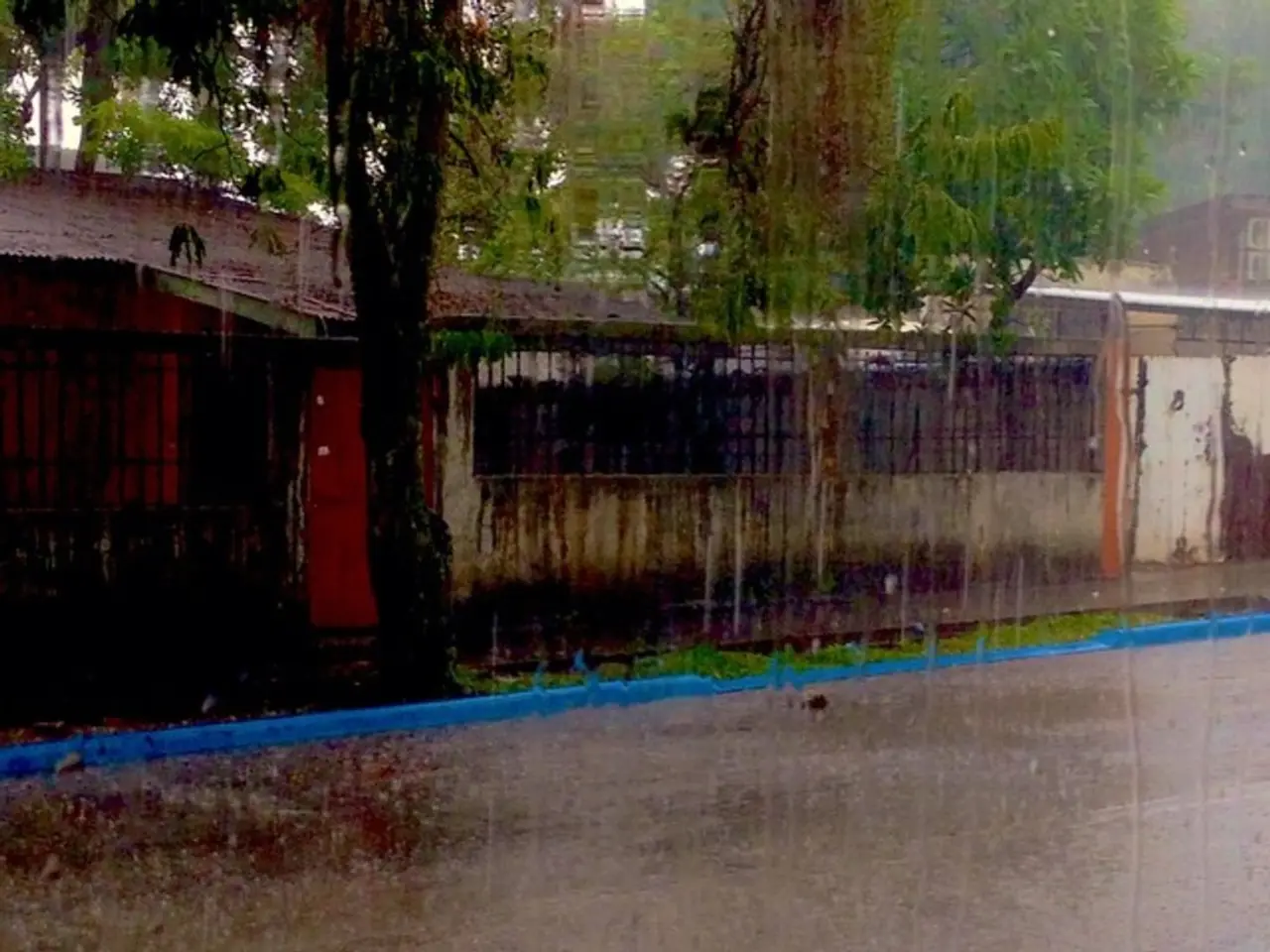Violent tropical storm 'Co-May' forces large-scale evacuations and transportation issues in Shanghai - Typhoon Co-May leads to mandatory relocations and transportation issues in Shanghai
Typhoon Co-May Causes Disruptions Across Eastern China
Typhoon Co-May, the strongest storm of the season, hit eastern China, particularly the city of Ningbo in Zhejiang province, causing evacuations, transportation disruptions, and closure of theme parks.
The typhoon, which made a second landfall in Shanghai, led to the evacuation of over 280,000 residents, mainly from vulnerable coastal and low-lying areas. People were relocated to nearly 2,000 temporary shelters, with many choosing to stay until the danger passes.
The storm caused significant transportation disruptions. Around 640 flights (about 30% of total) at Shanghai’s two international airports (Pudong and Hongqiao) were canceled or diverted. Ferry services within Shanghai were suspended, and speed limits were imposed on highways and rail lines to ensure safety. Train services were temporarily curtailed or suspended on affected rail routes, while the city's metro system continued normal operations. Major construction sites were also suspended, and landmarks such as Shanghai Tower closed observation decks due to safety concerns.
Other coastal cities like Zhoushan in Zhejiang province experienced strong winds with sustained speeds up to 83 km/h, and faced similar flight cancellations and transport disruptions. Authorities issued orange rainstorm warnings (the second highest level) in Shanghai and took precautionary measures to mitigate flooding and ensure public safety.
Despite the storm, Legoland and Disneyland theme parks opened their doors on Wednesday morning in Shanghai. Videos from the city of Ningbo south of Shanghai showed people wading through knee-deep water.
Natural disasters are common in China, especially in the summer. China is the world's largest emitter of greenhouse gases. Yet, the country aims to be carbon neutral by 2060. The heavy rainfall caused by Co-May resulted in water surging over coastal promenades along China's eastern coast and at least 48 deaths in the Beijing area and other regions.
In related news, Hong Kong authorities raised the highest alert level for the first time in two years before Typhoon Wipha. CCTV reported on the tsunami warnings for the Chinese coast issued due to a major earthquake off the Russian peninsula of Kamchatka. Tens of thousands of people have had to leave their homes due to heavy rainfall in the past few days.
Sources: [1] BBC News. (2021, June 16). Typhoon Co-May: Thousands evacuated in China. https://www.bbc.com/news/world-asia-china-57587199 [2] Reuters. (2021, June 16). Typhoon Co-May makes second landfall in Shanghai, disrupts flights, services. https://www.reuters.com/world/china/typhoon-co-may-makes-second-landfall-shanghai-disrupts-flights-services-2021-06-16/ [3] South China Morning Post. (2021, June 16). Typhoon Co-May: Shanghai's Disneyland and Legoland reopen despite severe weather warnings. https://www.scmp.com/news/china/society/article/3133922/typhoon-co-may-shanghais-disneyland-and-legoland-reopen-despite [4] CNN. (2021, June 16). Typhoon Co-May: Shanghai Disneyland and Legoland reopen as storm hits China. https://edition.cnn.com/2021/06/16/asia/typhoon-co-may-shanghai-disneyland-legoland-intl-hnk/index.html
To ensure the safety and well-being of the community during Typhoon Co-May, the environmental protection policies must consider climate-change impacts on weather patterns and precipitation levels. Moreover, the environmental science field should collaborate with health and safety officials to devise efficient strategies for managing future environmental disruptions and reduce adverse effects on human health and the environment.








